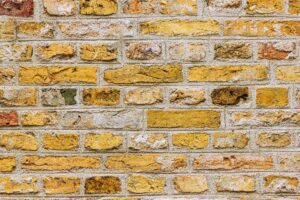Table of Contents
ToggleLearn from the experts: the most common tuckpointing mistakes and how to fix them
If you own or work on a brick building, you know how crucial it is to keep its structural integrity and appearance in top shape. Tuckpointing is an essential process that helps achieve just that. However, even experienced professionals can slip up, and these errors can have costly consequences.
Fear not! In this article, we’ll uncover the five most common tuckpointing mistakes and provide practical tips to avoid them. Whether you’re a seasoned contractor or a DIY enthusiast, our guide will help you master the art of tuckpointing.
So, get ready to pick up some trowel tricks, and let’s dive in!
Tips for Avoiding 5 Common Tuckpointing Mistakes
Even though tuckpointing may seem like a simple task, it most certainly calls for skills and accuracy. If you’re new in this line, here are some mistakes you should look out for:
Over-Grinding the Joints
- Over-grinding the joints is a common tuckpointing mistake that can seriously affect the structural integrity and aesthetic appeal of your brickwork. When the joints are ground too profoundly, the bricks become weaker and more vulnerable to water damage. This, in turn, can lead to mold, mildew, and even structural damage to your building.
To avoid this mistake, it’s crucial to use a grinder with a depth gauge and take time to ensure that you’re not grinding too deep. It’s also essential to make sure that the depth is consistent throughout the joints.
- When using a grinder, start with a coarse blade and work your way up to a finer blade as you get closer to the desired depth. It’s better to grind a little bit at a time and check the depth frequently than to grind too deep and risk damaging the brickwork.
Using the Wrong Mortar
- Using the wrong mortar can be a costly tuckpointing mistake that can compromise the structural integrity and visual appeal of your brickwork. When choosing mortar, it’s essential to consider not only the color and texture but also its compatibility with the strength of your existing brickwork.
Mismatched colors can make your brickwork look unappealing and reduce its value. Similarly, using the wrong mortar strength can lead to weaker bonds between the bricks, which can cause them to crack or break over time.
- To avoid this mistake, take the time to research the right type of mortar for your specific brickwork. Consider factors such as age, composition, and exposure to environmental factors like moisture and temperature.
Another critical factor to consider when selecting mortar is its compressive strength. A mortar that is too weak can cause the brickwork to crack or shift, while one that is too strong can be too rigid and cause damage to the bricks themselves.
Skipping the Cleaning Step
- Skipping the cleaning step before tuckpointing is a mistake many homeowners and even professionals make. However, neglecting this crucial step can lead to poor adhesion and weaker joints, compromising the structural integrity of your brickwork.
Before starting any tuckpointing project, it’s essential to thoroughly clean the brickwork to ensure that the new mortar bonds correctly. A clean surface will provide a better surface for the mortar to adhere to, creating stronger, longer-lasting joints.
- To clean the brickwork, you can use a wire brush or pressure washer to remove any loose debris and dust. It’s essential to remove all loose debris, including dirt, grime, and old mortar, to ensure that the new mortar adheres properly.
Poor Joint Filling
- Filling the joints with too much or too little mortar can lead to a lumpy or uneven appearance, compromising the brickwork’s structural integrity. If the joints are underfilled, there won’t be enough mortar to create a strong bond between the bricks. Conversely, overfilled joints can weaken the bricks’ structure and cause them to crack or crumble over time.
To avoid these problems, use a consistent amount of mortar and ensure that it is pressed firmly into the joints. Filling the joints completely without overfilling them is important, which can cause excess mortar to spill out and create a mess.
- When filling the joints, take the time to ensure that the mortar is compacted firmly and evenly, without any air pockets or gaps. This will provide a strong bond between the bricks and create a clean, consistent finish.
Rushing the Process
 Tuckpointing is a time-consuming process that requires patience and attention to detail. Rushing through the job can lead to mistakes, uneven joints, and weak bonds. Take your time and ensure that each step is done correctly to achieve the best possible results.
Tuckpointing is a time-consuming process that requires patience and attention to detail. Rushing through the job can lead to mistakes, uneven joints, and weak bonds. Take your time and ensure that each step is done correctly to achieve the best possible results.
There you go! Now you can achieve flawless results every time by avoiding these simple mistakes when tuckpointing. But since avoiding many of these errors require professional expertise, we’d suggest you get in touch with the best tuckpointing contractor in Washington, DC, at Dupont Tuckpointing!




